Teaching Kids About Good Touch and Bad Touch
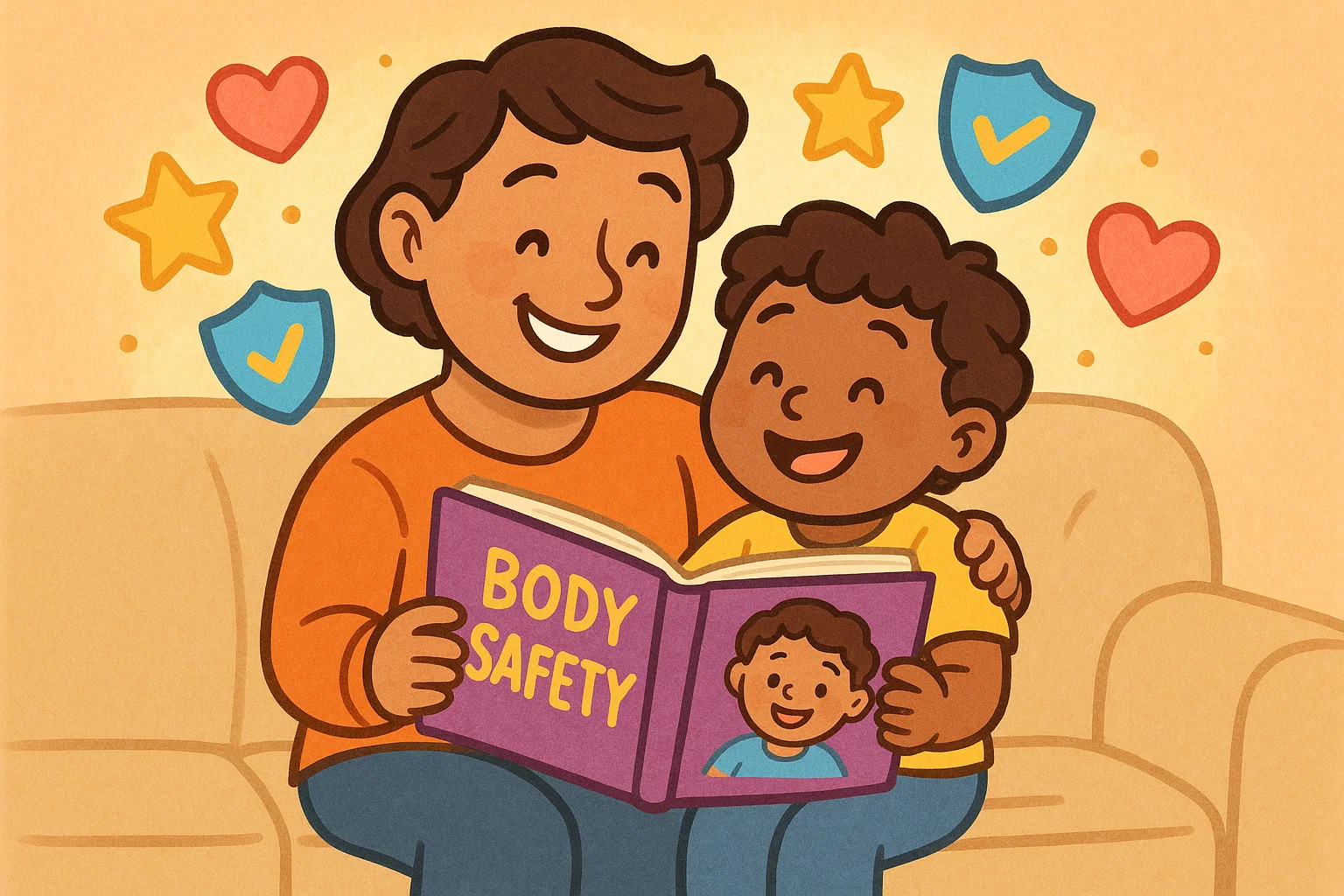
As a parent, your instinct is to protect your child, and few conversations are more important—or more difficult—than those about body safety and preventing sexual abuse. Teaching children the difference between safe and unsafe touch isn’t about fear; it’s about empowering them with knowledge, helping them set personal boundaries, and giving them the confidence to speak up.
This article offers an age-appropriate, research-informed guide to help you start these essential conversations. By keeping communication open, you create a trusted space where your child feels safe sharing anything that worries them. The goal is to equip you with clear, positive, and practical ways to teach these vital life skills.
Meaning of Good Touch and Bad Touch
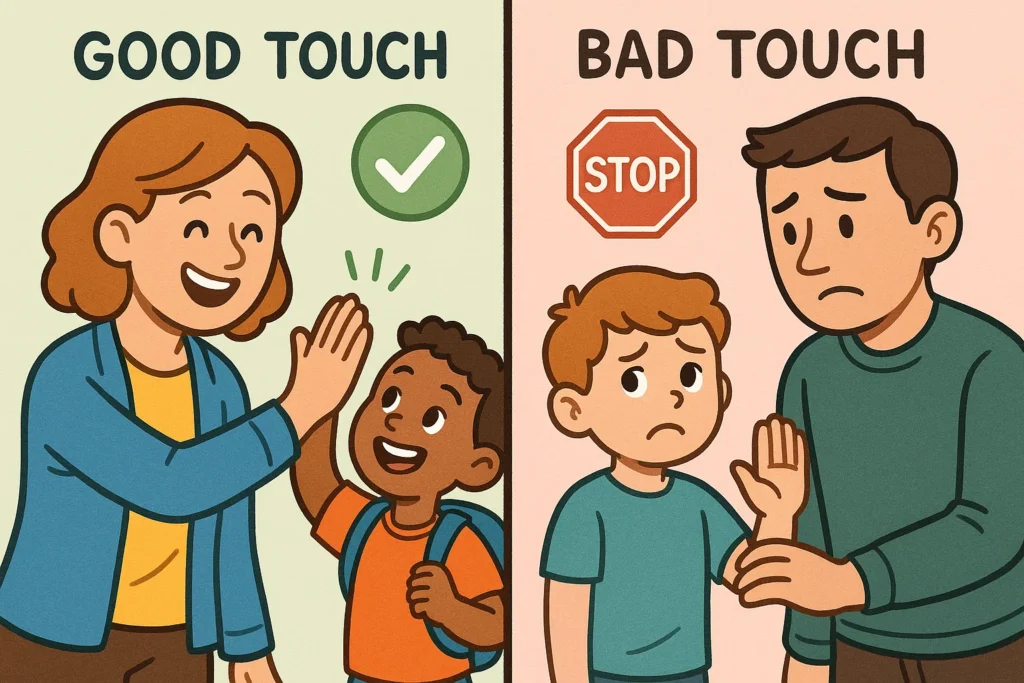
The cornerstone of body safety education is helping children understand what physical interactions are and how they make them feel. For a young child, the world is often black and white. Your role is to simplify the concepts of safe and unsafe touch so they can easily distinguish between them. It’s important to teach children that how a touch makes them feel is what matters most, not the act itself.
Good Touch Explained
A good touch is any physical contact that is safe, appropriate, wanted, and makes the child feel comfortable, secure, and happy. It is a fundamental part of human connection, showing love, support, or care. This is often referred to as appropriate touch.
| Characteristic | Description | Examples of Good Touch |
| Wanted | The child feels comfortable and can ask for the physical contact to stop at any time. | A supportive pat on the back. |
| Caring | Shows affection, love, or comfort. | A hug or kiss from a parent or trusted adult. |
| Necessary | An appropriate physical action for a specific, non-secret reason. | A doctor examining their body, with a parent present and their permission. |
| Respectful | It respects the child’s right to say “No.” | Holding hands while crossing the street. |
Bad Touch Explained
Bad touch is any touch that’s unwanted, makes a child feel uncomfortable, scared, hurt, confused, or ashamed — or any interaction a grown-up asks them to keep secret. It’s often referred to as inappropriate touch or unsafe touch. The crucial takeaway for children to understand is that they never have to accept physical contact that feels wrong.
According to the National Children’s Alliance in its 2025 Prevention Fact Sheets, educating children about body safety and giving them tools to refuse inappropriate touching is essential to preventing child sexual abuse.
A situation involving inappropriate physical contact might involve:
- Someone handling private parts of their body.
- An interaction that causes physical pain or injury.
- A situation that feels confusing or makes the child feel uneasy (trust the “uh-oh” feeling).
- Any instance where an adult asks the child to keep secrets about physical proximity or physical touch.
Examples of Safe and Unsafe Touch
Providing concrete, everyday examples helps bridge the gap between abstract concepts and real-life application, which is crucial when you teach kids about good touch and bad touch.
| Safe Physical Interaction (Good Touch) | Unsafe Physical Interaction (Bad Touch) |
| Hug from a parent, grandparent, or close family member. | Any physical touch that makes the child feel scared, confused, or sad. |
| A doctor listening to their heart with a stethoscope. | Someone handling private parts of the child’s body without a necessary reason (like a parent during bath time or a medical examination). |
| A high-five from a coach or teacher after a job well done. | Any adult asking the child to look at or touch their or anyone else’s private parts. |
| A friend holding their hand on the playground. | An interaction accompanied by a request to keep secrets from their parents. |
Body Safety Education for Children
True personal safety goes beyond distinguishing between types of touch; it’s about teaching children that their bodies belong to them and they have the right to set and enforce their own boundaries. This is the heart of body safety education.
Naming Private Body Parts
It is essential to teach children proper names for all parts of their body, including the private body parts (e.g., penis, vagina, breasts, bottom). Using correct anatomical terms rather than cute nicknames or confusing euphemisms (like “down there”):
- Reduces shame: It treats the body and these private body parts as normal, reducing the secrecy an abuser might exploit.
- Improves communication: If a child needs to report abuse, using clear language ensures that parents, doctors, or police understand exactly what happened.
- Builds Trust: It shows your comfort and confidence discussing the topic, which encourages your child to talk about it openly.
Private Parts and Body Rules
You must be explicit about which parts of their body are private. Teach your child that the body areas covered by a swimsuit are their private parts. These private parts have special rules:
- Only the child themselves can care for or have appropriate contact with their private parts.
- A parent or trusted caregiver may need to care for these areas for hygiene (like during bath time) or a doctor for a checkup, but always with the child’s knowledge and a clear explanation of why.
- No one else should ask to see their private parts or look at or touch the child’s private body parts.
Personal Boundaries and Consent
The concept of consent is simply about respecting another person’s boundaries. Start with simple examples, like asking permission before a hug or kiss (‘May I have a hug?’). This teaches the child two invaluable lessons:
- Their body, their choice: They have the right to say “no” to a physical interaction, even from a loved one.
- Respect for others: They must ask permission before they touch anyone else or initiate any physical interaction.
It’s critical to remind your child that they always have the right to say “no” to any physical interaction that makes them feel uncomfortable or uneasy.
Steps to Teach Kids About Good Touch and Bad Touch
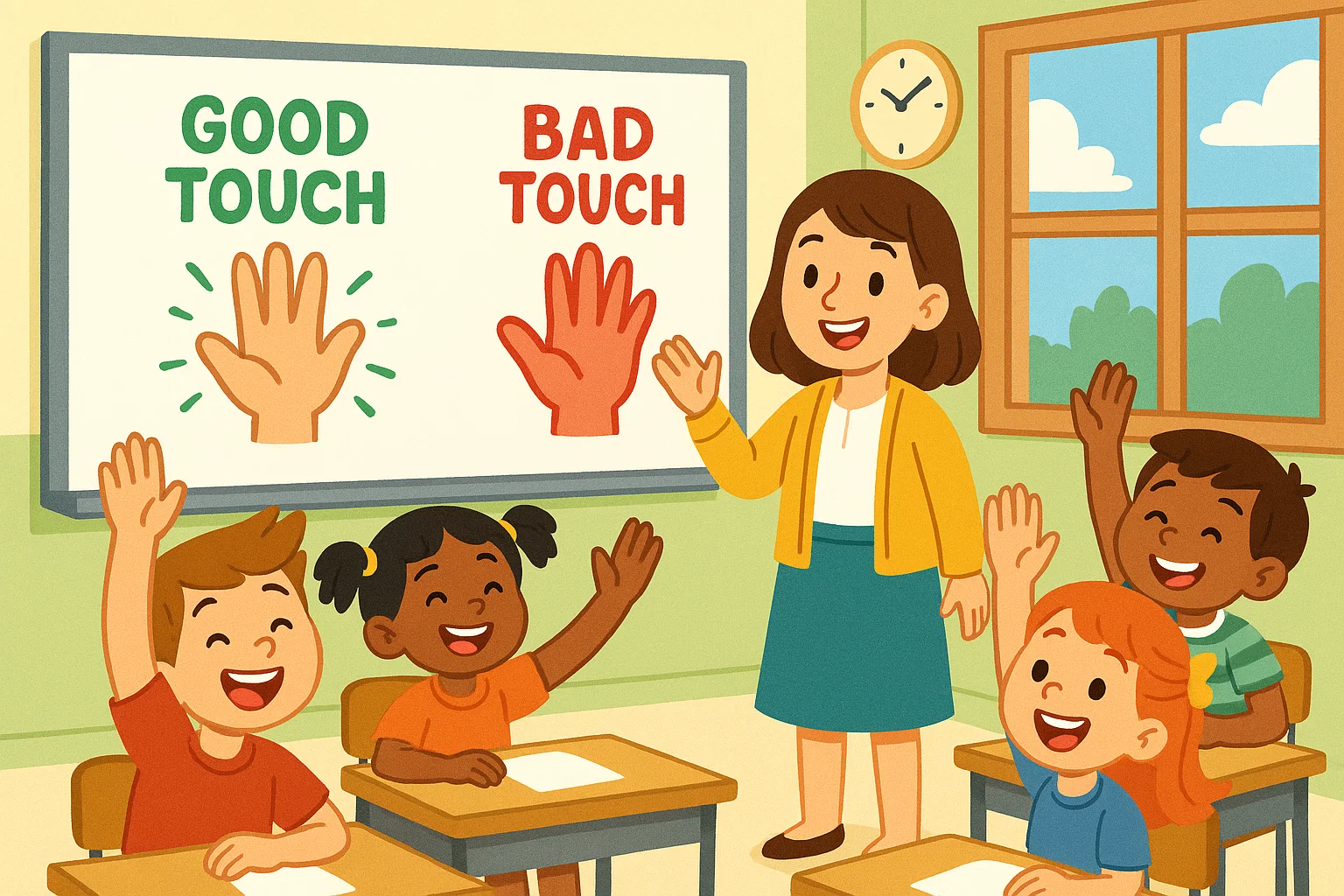
Effective teaching strategies are built on consistency, clarity, and empowerment.
Start Early
You can begin teaching kids the basic concepts of body safety and boundaries as early as 2 to 3 years old. Start with simple ideas like:
- “Your body belongs to you.”
- “We ask before we give a hug.”
- “It’s okay to say ‘No’ to a tickle if you don’t like it.”
These small conversations pave the way for more complex discussions about bad touch and good touch as they get older.
Use Clear and Simple Language
When talking with your child, keep the tone calm and factual. Avoid words that are vague or confusing to a child, such as “pervert” or “stranger danger,” which might instill unnecessary fear.
- Use action-based phrases: Instead of saying, “Don’t let anyone get too close,” say, “If a physical interaction makes you feel unsafe, tell me immediately.”
- Focus on feelings: ‘Good touch’ feels warm or happy; ‘bad touch’ feels uncomfortable or scary.
Empower Kids to Speak Up
The strongest safety net is an empowered child. Remind your child frequently that they are not responsible for an adult’s bad behavior and that you will always believe them. Encourage your child to tell a trusted adult immediately if anyone makes them feel uneasy or attempts inappropriate touch.
“If you ever feel scared or worried about a physical interaction, even if the person tells you to keep it a secret, you must tell me, a teacher, or another trusted adult from your Safe Adults List. I promise I will never be angry, and I will always help you,” is an example of an empowering statement you can use.
Role-Playing and Practice Scenarios
Use simple, non-threatening scenarios to help them practice what to do. This helps kids feel prepared and reduces the chance of freezing up in a real-life situation.
- Scenario 1: “A nice neighbor tries to give you a big hug or kiss, but you don’t feel like hugging today. What can you say or do?” (Answer: “No, thank you,” or step back.)
- Scenario 2: “Someone older than you wants to show you a picture on their phone in the park and asks you to keep it a secret. What do you do?” (Answer: Say “No” and get away to a busy area.)
Books and Visual Tools
Age-appropriate books, like My Body Belongs to Me or Some Secrets Should Never Be Kept, are excellent resources. They provide a neutral starting point for the conversation and use visual aids to reinforce concepts like private body parts and the difference between good touch-bad touch.
Age-Specific Guidance on Body Safety
The way you discuss these topics needs to evolve as your child grows and their understanding deepens.
Ages 3–5: Private Parts and Basic Rules
Focus on simple rules and ownership.
- Key Focus: Names of their body parts (including private ones) and the Say No and Get Away rule.
- Example Phrases: “Your swimsuit covers your private parts. They are private because your body belongs only to you.” “If you need help, you tell a trusted adult.”
Ages 6–9: Safe and Unsafe Touch Examples
Children in this group are ready for more nuanced explanations and recognizing emotional manipulation.
- Key Focus: Identifying unwanted touch, understanding that even people they know can be unsafe, and the concept of No Secrets About Touching.
- Actionable Tip: Help them create a Safe Adults List that includes trusted adults beyond parents. It’s important they learn these steps early.
Ages 10+: Consent and Peer Interaction
Pre-teens and teens are beginning to navigate social relationships, making consent and mutual respect crucial.
- Key Focus: Mutual agreement, respecting boundaries in friendships, and understanding digital personal safety.
- Discussion Point: Discuss the difference between a joke or rough play and physical contact that crosses a line. Explain that inappropriate physical touch is never okay, regardless of context.
Body Safety Rules Every Child Should Know
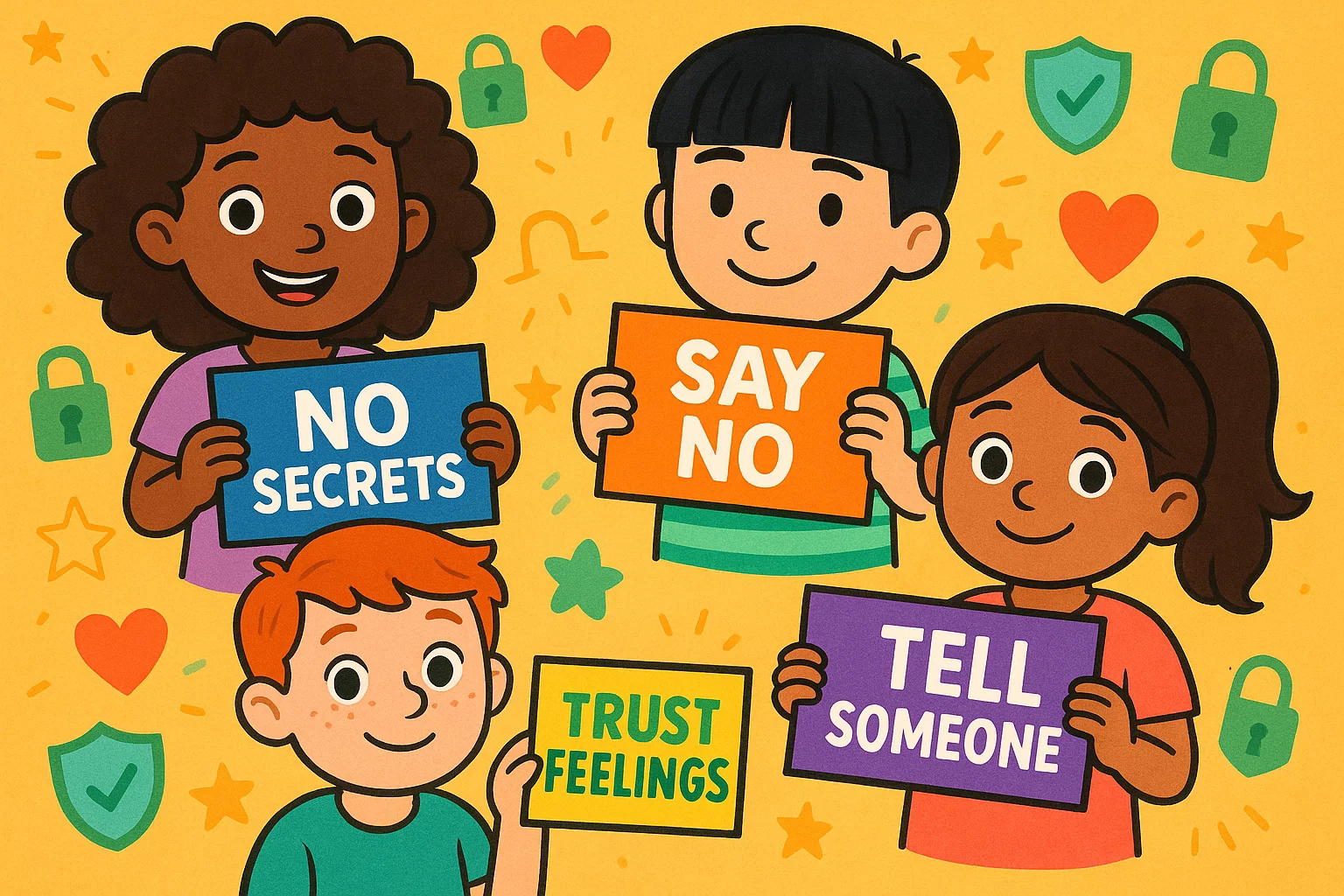
These four rules should be reinforced regularly to help you teach your children.
No Secrets About Touching
This rule is paramount. Abusers often rely on secrecy to maintain control. Your child must understand that there are no ‘good’ secrets about their body. They should always tell you if anyone asks them to keep a secret about touching. It’s important to talk about this often.
Trust the “Uh-Oh” Feeling
The “uh-oh” feeling is a child’s intuition—a physical response (like a knot in the stomach) when something feels wrong. Remind your child that if any physical interaction or situation makes them feel uneasy, even if they can’t explain why, they must leave immediately and tell a grown-up. This helps children learn to communicate openly about their bodies.
Say No and Get Away
Teach your child to use a strong, clear voice to say “no” and then quickly move away from the situation. Physical disengagement is as important as verbal refusal.
Safe Adults List
Help your child create a list of at least five trusted adult figures (besides you) whom they can talk to if you are not around. This list might include a teacher, coach, relative, or family friend. This helps kids know exactly who they can confide in to be safe from sexual abuse.
Role of Parents and Teachers
Preventing child sexual abuse is a community effort involving the people closest to the child.
Parents: Building Open Communication
The most powerful tool in preventing child sexual abuse is an open, judgment-free relationship with your child.
- Listen Actively: If a child reports a bad physical interaction, stop everything and listen calmly. Validate their courage for speaking up.
- Normalize the Topic: Talk about body boundaries as often as you talk about wearing a seatbelt. This makes the safety talk a normal part of life, not a scary one-time event.
Teachers: Creating a Safe School Environment
Teachers are vital observers and reporters. They can:
- Reinforce Boundaries: Regularly affirm the right of students to say “No” to unwanted physical contact from peers.
- Be Alert: Notice sudden behavioral changes, such as withdrawal or sudden aggression, which may indicate a problem.
Collaborative Programs
There are many school and community programs available that teach kids about body safety. Engaging in these programs reinforces the messages you teach at home, providing consistent instruction from multiple sources.
Signs of Sexual Behavior Problems in Children
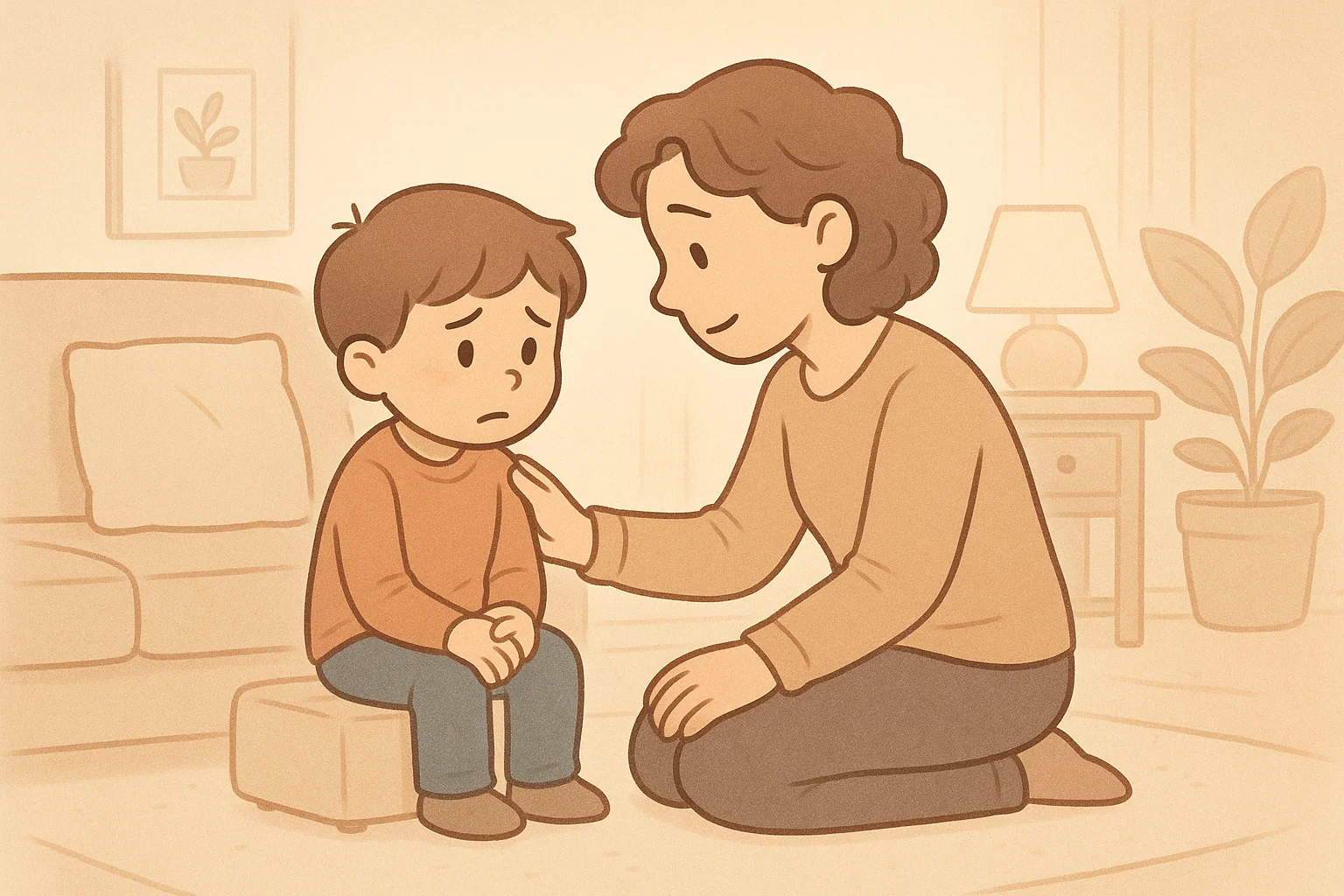
It’s common for parents to worry about what counts as normal curiosity. This is an important topic for parents to understand.
Normal Curiosity vs. Concerning Behavior
| Normal, Age-Appropriate Behavior | Concerning Behavior (Warranting Observation/Action) |
| Younger children innocently exploring their own bodies in private. | Excessive, aggressive, or coercive sexualized play with other children. |
| Asking honest, factual questions about parts of their body. | Obsessive focus on sexual topics, or using sexually explicit language beyond their social group. |
| Accidental inappropriate physical contact due to lack of coordination or understanding. | Trying to touch others or look at others’ private body parts repeatedly after being told no. |
When to Talk to a Pediatrician or Counselor
If you observe persistent, concerning behavior (like aggression in sexual play, or attempts to touch their private parts), or if your child reports a bad touch that involved a secret, it is time to seek professional guidance. A counselor or pediatrician specializing in child development can help you tell the difference between normal curiosity and signs that a child may have experienced abuse or needs professional help to process confusing experiences.
FAQs
What Age to Start Teaching Good Touch and Bad Touch?
Start early, around ages 2-3 (preschoolers), using simple concepts like respecting body ownership and asking before a hug or kiss. The conversation should evolve as they grow, covering more complex issues like private parts and secrets between ages 5 and 8. You are never too early to start talking with your child.
How to Explain the Concept to a Child?
Use the feeling-based approach:
- Good Touch: “An appropriate touch that makes you feel happy, safe, and loved. Like a big hug from me.”
- Bad Touch: “An unwanted touch or interaction that makes you feel scared, confused, hurt, or yucky. If anyone initiates a physical interaction that makes you feel uncomfortable, you must tell me right away.”
Difference Between Safe Touch and Unsafe Touch?
Safe touch is an appropriate touch that is given by a trusted adult and makes the child feel comfortable. Unsafe touch is any inappropriate touch or unwanted touch that makes the child feel bad, sad, scared, or involves a secret. The key is how the child feels about the touch — that’s what helps them understand the difference.
What to Do if a Child Reports a Bad Touch?
- Stay Calm and Listen: Your primary reaction should be to remain calm. Do not interrogate. Use a non-judgmental, open body language and simply say, “Thank you for being so brave and telling me.”
- Validate and Support: Reassure the child they did the right thing by telling you and that you believe them. Let your child know you will keep them safe.
- Report: Immediately contact the appropriate authorities (e.g., Child Protective Services or police) and seek professional support from a trained therapist. Do not contact the alleged perpetrator yourself — always let authorities handle it.
